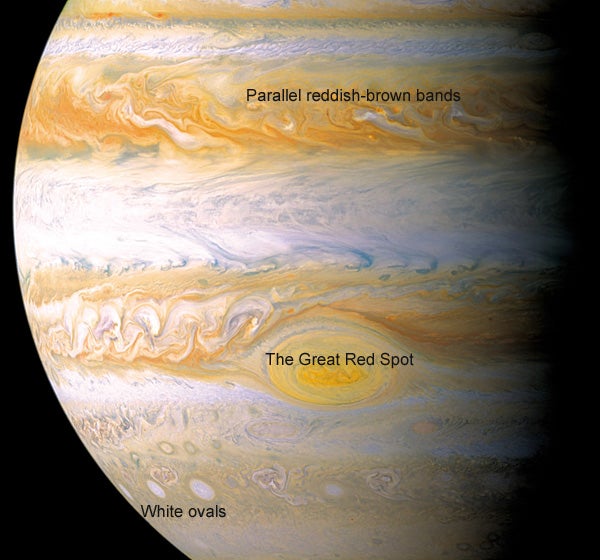Earth’s hurricanes are cyclonic, rotating counterclockwise in the Northern Hemisphere and clockwise in the Southern Hemisphere, thanks to Earth’s rotation. Under the right conditions, a broad area of thunderstorms over a warm ocean surface becomes organized and forms a tropical storm. As this storm strengthens into a hurricane, it develops an “eye” of calm, stable, descending air at the storm’s center, where the pressure is lowest. Hurricanes dissipate when they move over land or into cooler waters, depriving them of their energy source.
Jupiter’s Great Red Spot has been observed for centuries, with its appearance changing slightly. Like other oval spots in the atmospheres of gas-giant planets, the Red Spot is an anticyclone — a dome of high-pressure gas rising above the surrounding atmosphere, spinning counterclockwise in Jupiter’s Southern Hemisphere. Fast-moving jet streams seem to create a stable shear that contributes to the long life of jovian anticyclones. Instead of having a central eye, the spots are encircled by a ring of calm, stable, descending gas.
In 2000, cameras aboard the Cassini spacecraft monitored Jupiter’s atmosphere for more than 2 months. In that time, nine small spots drifted westward along the planet’s South Equatorial Belt to be absorbed by the Great Red Spot. A turbulent region west of the Great Red Spot seems to be a source for what appear to be thunderstorm-like features. Farther west, the South Equatorial Belt spawns anticyclones. Planetary scientists suspect these features play a role in maintaining the Great Red Spot. — RICHARD CROWE, UNIVERSITY OF HAWAII, HILO










